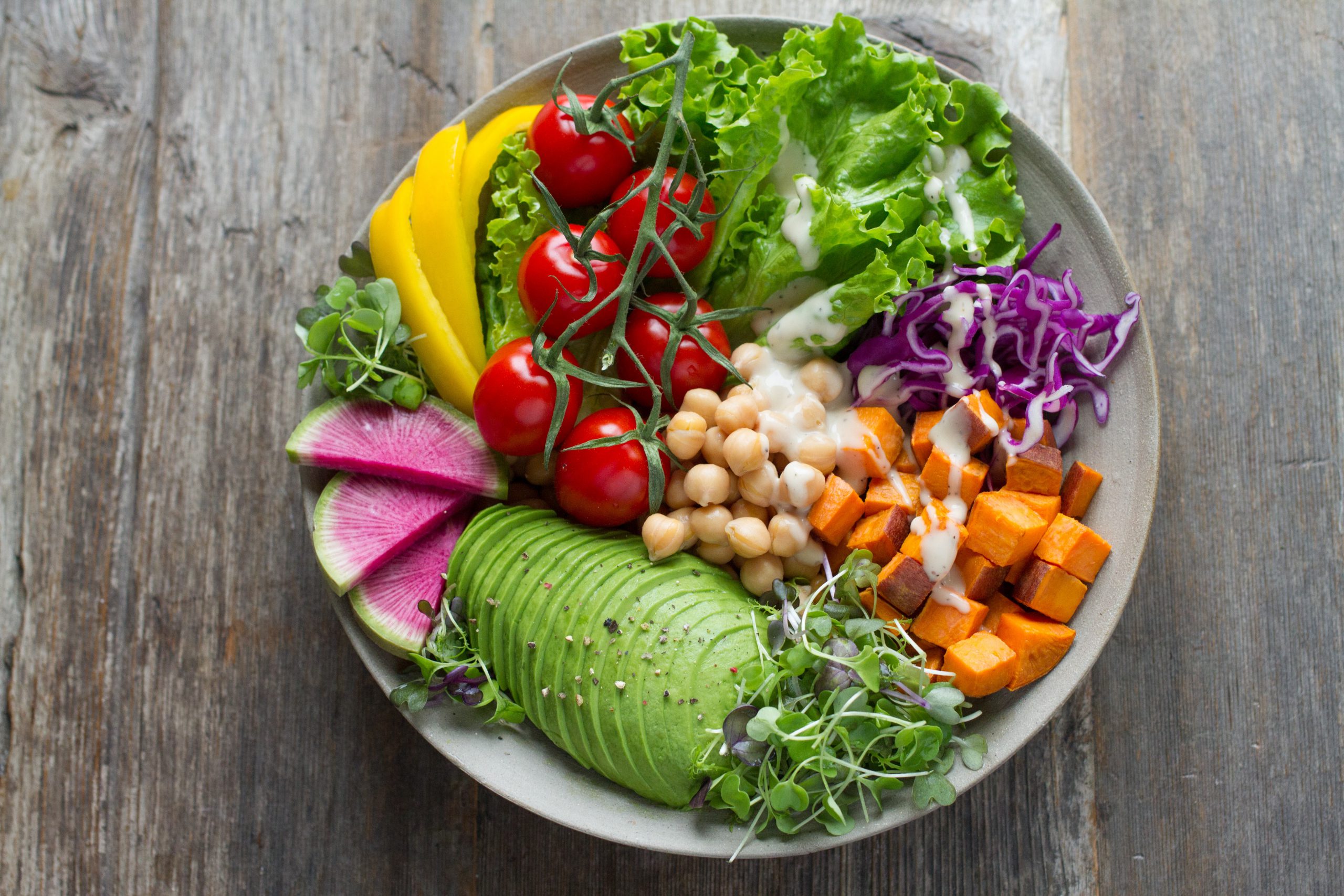Intermittent fasting is one of those things that have gained a misguided reputation. The very mention of it gets people on the defensive, and who’s to blame them? I mean, who wants to starve themselves voluntarily? Well, luckily for you, intermittent fasting is all about eating, not starving, and I’m gonna share with you the top 5 benefits it can bring to your midlife health.

Midlife is hard enough. As menopause kicks in, we can feel ourselves aging and suffering the pains and hurdles that come with it. Have you felt Backache, knee, joint pain, weight gain, and low energy levels, too? I bet the last thing you want to do is get up and exercise when you’re experiencing any of these symptoms. But if exercise isn’t on your agenda right now, how else can you support your body to stay healthy and strong and keep those age-related symptoms at bay?
What is intermittent fasting?
Intermittent Fasting is simply a time-restricted eating schedule. It’s a sustainable way of living and eating that encourages you to eat healthy, nutritious foods at the right times for your body. Your body takes time to process what you put into it, and by continuously grazing or over-eating, you’re not giving it the time needed to complete those processes efficiently and maintain balanced energy levels.
Whilst this post is about the benefits of intermittent fasting in midlife, you can read about the ins and outs of exactly what it is and how it works in this earlier post.

Intermittent Fasting Schedules – when to fast?
Different time frames are available, so you can choose whichever works for your lifestyle. This is not about starving, and it’s about eating the right stuff at the right time for you, so pick a schedule that makes it easy for you to stick to it. If you’ve never fasted before, you can start by trying one of these options:
- Simple fast. This is a basic fast that lasts for 12 hours. A normal eating schedule of 3 meals a day continues, but no snacks are allowed. After dinner, you don’t eat again until breakfast. Example: Finish dinner at 7 pm and don’t eat again until 7 am. Only water may be consumed during the fasting period. This is a pretty easy schedule for beginners to stick to, as most of the fasting is happening while you are asleep.
- Brunch Fast or time-restricted eating. This is similar to the schedule above, but you introduce breakfast a little later than usual. Fasting for 14 hours this time, there is no eating after dinner. Example: Finish dinner at 7 pm and don’t eat again until 9 am.
- Cycle Fast. This is not a daily fast. Instead, restrict your eating times only three days per week but this time for periods of 14-16 hours, by skipping breakfast or dinner. It’s important to have regular eating habits interspersed.
Example: Monday, Wednesday, Friday – finish dinner around 7 pm and eat again between 9 am and 12 pm the next day. All other days should be your normal eating patterns. - Strong Fast or 16-hour Fast. Eat two meals per day and fast through either breakfast or dinner. Eat all the food in a 6 – 8-hour window. Example: Fast in the morning, eat between 12 – 7 pm, and fast until the following morning. You could also allocate the eating window as 8 am – 3 pm or whatever time slot fits your lifestyle.
- Five-two schedule: Fasting may not work for you every day. You could choose the simple or brunch fast during the week and take a break over the weekend from Intermittent Fasting. It doesn’t matter which five days you fast, as long as they run together.
When can you expect results?
There is no quick fix when it comes to your health. Especially in midlife, when your hormones and body are changing, you need to stick with it to find what works best for you and then allow time for results.
Although intermittent fasting has many benefits in midlife, you may not experience all of them the first time. Fasting is like exercise; you need to start small and learn what works for your body. As time goes on, you get better at it and enjoy more benefits.
Generally, it takes 1-2 weeks of intermittent fasting before your body responds, your hunger reduces, and you adapt to your new eating schedule. Sticking to a smaller fasting window at first will make the transition easier and more sustainable for you.

Intermittent Fasting Benefits For Women In Midlife
There are many benefits to intermittent fasting, and I documented my experience with it so that you can read how it impacted me during my 60-day experiment. Here’s a run-down of the 5 benefits you will feel most impacted when using intermittent fasting in midlife.
- Simplifies Your Meals
Because intermittent fasting is a sustainable lifestyle rather than a special diet, there are no special foods to buy and no foods that are off-limits. You choose from organic and unprocessed foods to eat 2-3 meals per day. Pre-planning your meals, reducing the number of meals, and cutting out snacks lead to healthier food choices and a less stress-fueled relationship with food.
A balanced meal focuses primarily on the following:
- Vegetables – fresh or frozen
- Some fruits are fresh and frozen
- Whole grains, including quinoa, brown rice, oats, and barley
- Lean protein sources like chicken, fish, beans, lentils, tofu, nuts, seeds, cottage cheese, and eggs
- Healthy fats from fatty fish (like salmon and cod), olives, olive oil, coconuts, avocados, nuts, and seeds
2. Boost Fat Burning
Reduced estrogen levels during menopause cause your body to redistribute fatty deposits from your hips, thighs, and buttocks to your abdomen. Fasting creates the ideal environment for fat burning as your insulin levels stabilize, and the body uses fat as fuel. This boosts your fat burning, targets your mid-weight gain, and helps you lean out.
3. Improves Energy Levels
Eating constantly throughout the day, even in smaller portions, keeps your metabolism in a constant cycle of breaking down carbohydrates to create blood sugar. This sugar is either stored in the cells for later (as fat) or used as energy straight away. It cannot be used for both at the same time. When the current blood sugar levels drop, your energy levels drop. This is when you feel the ‘crash and burn’ effect or tiredness kicking in.
During fasting, your body uses fat for energy. The conversion of stored fat to usable energy is a slow process which means the insulin, or blood sugar, remains at a constant level. Accordingly, you will notice more natural energy and a greater energy balance than during times of unrestricted eating.
4. Supports Clarity
Many of us eat mindlessly and struggle with food and sugar cravings. Fasting helps us to realize that these cravings are sometimes of a mental and emotional nature and, therefore, manageable. Detaching food cravings from emotional triggers allows us to better connect to our intuition and make better decisions in life.
Fasting has also been used throughout history to elevate consciousness in many religions, most notably by Buddhists during intense meditation. The Journal of Fasting & Health also published a study by Mousavi et al. which illustrated the positive effects that fasting has on the happiness of the general population.
I wrote this post on how to practice mindful eating so you can benefit from a deeper connection to yourself and a better understanding of your eating habits.
5. Stimulates Cellular Autophagy and Reduces Inflammation
Autophagy is a natural part of your immune system process. It’s the body’s way of cleaning out damaged cells in order to regenerate newer, healthier cells. Old, damaged, and abnormally developing cells are recycled and used for energy to create new healthy cells.
A new study also concluded that intermittent fasting reduces inflammation, a condition that can lead to various diseases such as diabetes, multiple sclerosis, and inflammatory bowel disease. This is particularly important in midlife as many of these conditions begin to creep upon us. Intermittent fasting in midlife is an effective way to minimize the risk of these illnesses.

So you see, intermittent fasting is a means to really get control over your eating habits and the effect that they have on your overall health. Intermittent fasting in midlife is not just about losing weight but about proactively taking steps that keep your changing body in the best condition possible.
If you think you’re ready to try it alongside a tailored fitness routine and lifestyle strategies and would like some support and guidance, check out my Pursue Your Spark Blueprint. The next course is due to start soon, and I’ll be working with a small group of women in their midlife to reach their health and fitness goals. I’d love to have you join us.

I have been following a timed fasting program for well over a year and love it! It’s the best way to avoid weight gain and I also think it energizes me. Great post with lots of good info!
This is fantastic Phyllis and thanks for stopping by.
How funny! I just asked you about fasting times on Instagram. Now I know! We will give this a try!
I read your mind, Shelley. The 4 Week Lean Out Program will start on June 1st if you like to join us. I love to have you. The link to learn more is here and to get on the waitlist. http://bit.ly/2HkMnbb
Takes discipline but I’d like to give this a try
Nancy this would be wonderful. The next start of the 4 Week Lean Out Program is June 1st here is a link to get on the waitlist and find out more about the program. http://bit.ly/2HkMnbb
thank you for this review and the tips. my preference is for a daily 16-hour fast, that way it’s just part of my regular daily routine. be well.
Rena
http://www.finewhateverblog.com
Hi Rena! Thanks for stopping by and YES, fasting has to work with ones schedule. Good job and happy fasting.
Comments are closed.